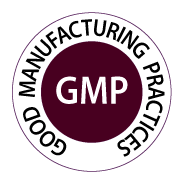We’ve always heard that exercise is good for us. But now scientists understand that many of its benefits stem from its effects on the endothelium – the lining of blood vessels that supply nutrients and oxygen to all vital organs and body parts. In moderation, walking, dancing, weight lifting and even stretching may all improve vascular health.
Physical activity increases blood flow, which results in a phenomenon known as shear stress, or friction of the moving blood against the endothelial lining. This in turn triggers production of nitric oxide (NO), which is the most potent stimulant of endothelial health. Regular exercise may not only prevent endothelial disease, it may in some cases even help restore endothelial health in persons with heart disease, diabetes, or other chronic conditions.
So let’s exercise regularly, or even walk more! Walking instead of driving to nearby destinations, deliberately parking further away from the store, getting up from the computer or TV for a stretching break, or joining a dance or swimming class might be a great way to start.
What Causes Endothelial Health or Disease?
Lining the heart and approximately 60,000 miles of blood vessels is the endothelium, a thin, active, single cell layer that regulates blood flow to the organs by sending and receiving chemical signals. Among its many roles are blood pressure control by dilating and constricting blood vessels, regulation of blood clotting, nutrient supply to body tissues, and controlling inflammation and immunological processes.
Shear stress can increase NO production by endothelial cells ten to thirty times above resting conditions 1 by stimulating an enzyme known as endothelial NO synthase.2 Increasing the intensity of exercise further increases blood flow and shear stress.3
Decreased blood flow lowers shear stress and vessel wall levels of NO. Because NO normally signals the endothelium to relax blood vessels, endothelial dysfunction can result.
Reduced endothelial control over its important functions then leads to cardiovascular, atherosclerotic, autoimmune and other diseases. The blood vessel walls become more permeable, allowing harmful lipoproteins, C-reactive protein involved in inflammation, and other substances to leak through to body tissues.
Another important cause of endothelial dysfunction is oxidative stress. Just as rust forms on an iron nail exposed to oxygen, unwanted byproducts of using oxygen can build up in our bodies. These harmful free radicals, or reactive oxygen species (ROS), can disrupt NO balance and damage the endothelium, allowing toxins to pass into our tissues.
Antioxidants, such as vitamin C and beneficial plant compounds known as polyphenols obtained from fruit and other food, normally neutralize these free radicals. But studies in mice4 have shown that lack of physical exertion, especially cardiovascular exercise, can increase activity of a blood vessel enzyme known as NADPH oxidase. This, in turn, increases ROS production in the blood vessels, causing endothelial dysfunction and atherosclerosis in sedentary as opposed to physically active conditions.
How Does Exercise Improve Endothelial Health?
Compared with inactivity, physical exercise improves endothelial health by increasing blood flow through the heart and to the active muscles. This creates shear stress, which triggers production of NO signaling the endothelium.5
Exercise also increases circulating levels of endothelial progenitor cells (EPC) that play a role in the regeneration of endothelial cells. Intensive and moderate running for 30 minutes, but not for 10 minutes, increased circulating EPC levels in healthy volunteers.6
Resistance training in men improves measures of vascular health and new capillary growth as early as 2 weeks into a 12-week training program.7 Even a single weight lifting session, including bench press, dumbbell curl, dumbbell squat, and standing dumbbell upright row, increased EPCs and associated blood factors, with the highest exercise intensities being most effective.8
However, postmenopausal women following government-recommended guidelines of 30 minutes of moderate-intensity continuous exercise had no immediate effects on endothelial function or factors associated with vascular repair. For vascular health, postmenopausal women may benefit most from short bursts of activity followed by active rest periods.9
Nordic walking, which involves more muscle groups than regular walking, was more likely in postmenopausal women to increase blood levels of VEGF, which stimulates new blood vessel growth, than traditional walking at equivalent training intensity.10 Even stretching increases blood flow and may improve endothelial function, reduce arterial stiffness, and/or lower blood pressure, most likely by increasing NO bioavailability.11
Am I Too Old to Exercise?
Older adults who exercise not only tend to look and feel younger but their endothelial cells also show less aging than those of their less active contemporaries.12 For better endothelial health, the sooner we start moving, and the longer we keep it up, the better. But starting physical activity even late in life is better than staying on the couch!
A large national survey study13 showed that the more active a person was over adulthood, the better their biomarker profile for endothelial and cardiovascular health. Those that became active at age 60-64 had slightly healthier profiles than those that became inactive. But those who stayed active throughout adulthood had the best profiles, and those who were always inactive had the worst endothelial and cardiovascular health.
So let’s get going for vascular health, once our doctor gives their blessing! If we’re already active, let’s keep it up, and if not, it’s never too late to start!
About the author:
Laurie Barclay, MD
Laurie Barclay, MD, is a neurologist who has published more than 60 peer-reviewed journal articles concerning her research on Alzheimer’s disease and other dementias. She is editor and author of several chapters in “Clinical Geriatric Neurology,” a medical textbook which has been translated into Italian and has also written many other medical book chapters both for physicians and for the lay public. She has been an invited speaker on her own research and on other topics at medical and scientific meetings and lectures worldwide.
Dr. Barclay received her BA from Princeton University in 1974 and her medical degree from Cornell in 1978. Her training includes a medical internship and neurology residency at the New York Hospital-Cornell, and a fellowship in neurobiology at the Burke Rehabilitation Center-Cornell, where she also served as chief of the spinal cord trauma unit and clinical director of dementia research. After being an assistant professor of neurology at the New York Hospital-Cornell from 1983 to 1987 and at the University of South Florida from 1987 to 1992, she went into private practice and medico-legal consulting.
Dr. Barclay is board-certified in neurology by the American Board of Psychiatry and Neurology, in forensic medicine by the American Board of Forensic Medicine, and in traumatic stress by the American Academy of Experts in Traumatic Stress. In addition to being an associate in the American Academy of Neurology and in the World Federation of Neurology Research Group on Dementia, she is a member of the American Medical Writers Association, the American Medical Association, and the American Association for the Advancement of Science. Her many awards include 1993 Woman of the Year and listings in “Who’s Who in the World” and in other “Who’s Who” directories.
While freelance writing for WebMD, Dr. Barclay is also Senior Medical Editor for the “Medical Disability Advisor,” and is writing a memoir about her life as an amateur ballroom dance champion with her husband and partner, Richard Collett.


